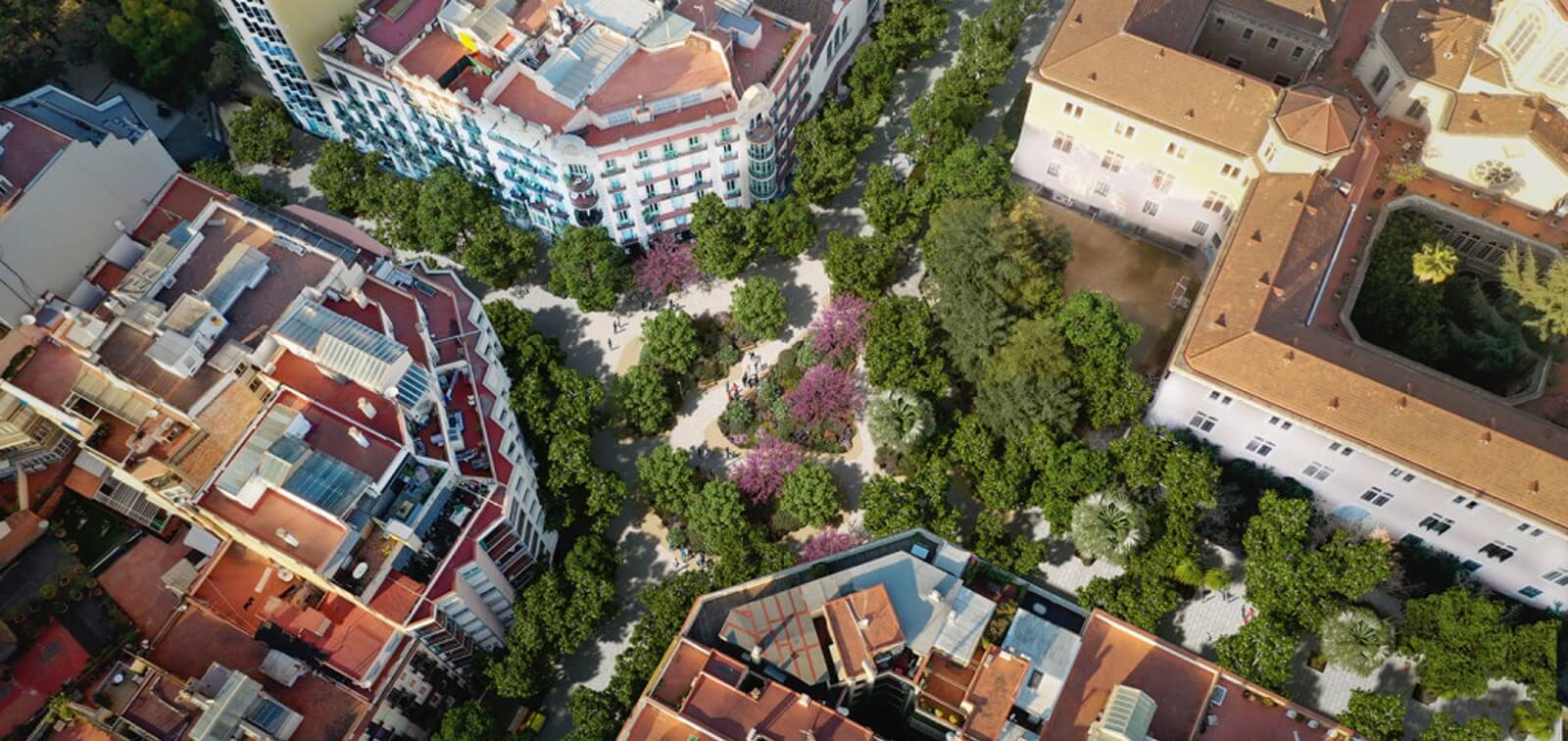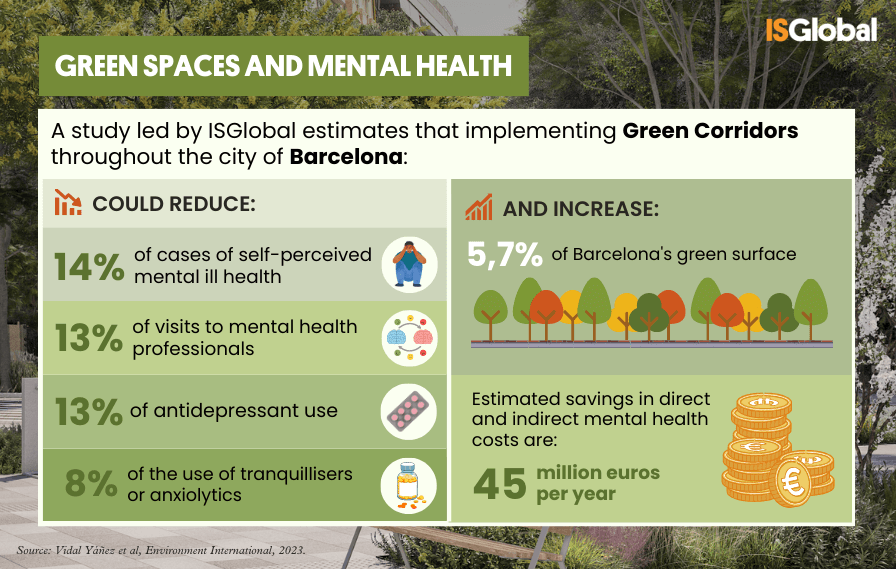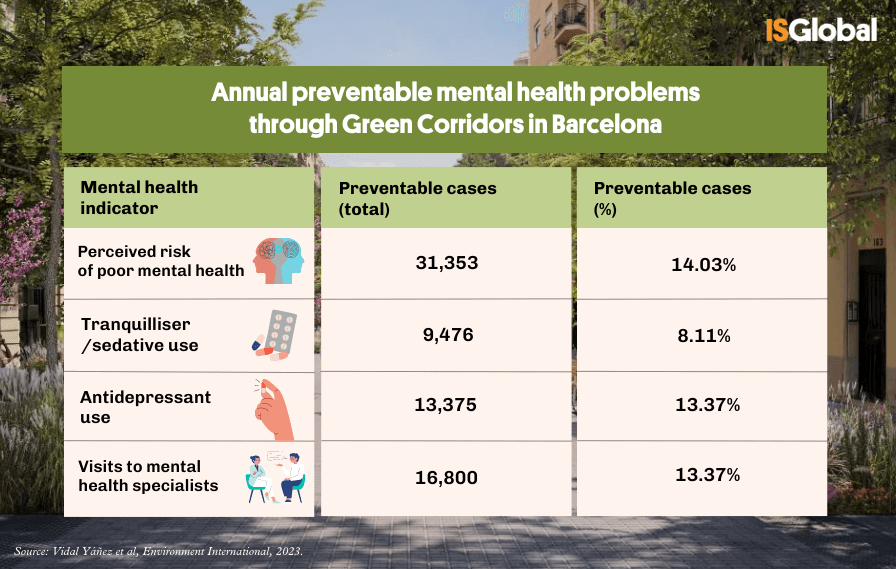Implementing Green Corridors Throughout Barcelona Could Reduce Annual Antidepressant Use and Visits to Mental Health Specialists by 13%
A health impact assessment has estimated the improvements in mental health that would result from increasing green space throughout the city
29.03.2023
A health impact assessment led by the Barcelona Institute for Global Health (ISGlobal), a centre supported by the ”la Caixa” Foundation, has concluded that implementing green corridors throughout the city of Barcelona would result in a “considerable reduction” in mental disorder cases in adult residents as well as in direct and indirect costs associated to said cases. The study was published in the journal Environment International.
It is estimated that mental health disorders account for more than 30% of the global burden of disease. Scientific evidence shows that green spaces benefit overall health—and mental health in particular—via various mechanisms, for example by decreasing exposure to air pollution, noise and heat; by reducing stress and facilitating restorative processes in the body; and by encouraging physical activity and social interaction.
In this study, the research team set out to assess the mental health impacts of a strategy developed by the city to, among other things, reallocate more public space to greenery. This plan, known as Green Axes (Eixos Verds in Catalan), forms part of the Barcelona Superblock project. It is currently being implemented primarily in the city centre, although it ultimately envisages the transformation of one out of every three streets into a green corridor.
The researchers obtained data from a previous study that quantified the land area allocated for green space and the degree of greenery throughout the city in 2015. They then calculated the increase in green space that the implementation of the Green Axes plan would produce across the entire city. Data on the mental health of the population were obtained from the Barcelona Health Survey (2016-2017). By applying the calculations from previous research on the relationship between residential green space and mental health, the researchers were able to estimate how the planned increase in green space under the Green Axes plan would impact on several mental health outcomes across the population.
The findings showed that, if fully implemented, the Green Axes plan would result in a 5.67% citywide increase in green space, primarily in residential areas. This increase in vegetation, in turn, would lead to the prevention of 14% of cases of self-perceived poor mental health, 13% of visits to mental health specialists and cases of antidepressant use, and 8% of cases of tranquilliser/sedative use each year. The researchers further concluded that these mental health benefits for the population would translate into annual savings of €45 million in direct and indirect mental health costs.
“Barcelona has a problem that urgently needs to be solved”, commented ISGlobal researcher Natalie Mueller, last author of the study. “Only 11% of the city is currently allocated for green space—and this includes the Collserola park, which accounts for 60% of the city’s green space. In the Eixample neighbourhood, for example, only 6.5% of the land area is allocated for green space. However, in order to comply with the World Health Organisation’s recommendation of at least one 500 m2 green space within 300 m of each home, we calculate that this figure would need to be as high as 25% of the land area.”
“Just 20% of the population of Barcelona currently lives in a place that meets the WHO recommendation on green space. At the European level, only 40% of city dwellers enjoy the recommended access to green space, which shows that we still have a lot of work to do in terms of greening our cities,” explained ISGlobal researcher Evelise Pereira, co-author of the study.
“This study helps illustrate that greening is a relevant strategy to promote health, and in particular mental health, in urban settings”, says co-author Diana Vidal Yáñez.
“Although our study evaluated the potential impact of the Green Axes plan, the results do not apply exclusively to Barcelona,” commented Mark Nieuwenhuijsen, Director of the Urban Planning, Environment and Health Initiative at ISGlobal. “Any action in any city that leads to an increase in the amount of green space near people’s homes should lead to improvements in the mental health burden across the population. However, in order for these benefits to materialise, it is essential that interventions be evenly distributed across the city and accompanied by complementary policies, such as high-quality public and active transport systems, low-emission zones, and policies to prevent speculation and gentrification.”
Reference
Diana Vidal Yáñez, Evelise Pereira, Marta Cirach, Carolyn Daher, Mark Nieuwenhuijsen, Natalie Mueller. An urban green space intervention with benefits for mental health: a health impact assessment of the Barcelona “Eixos Verds” Plan. Environment International, 2023. https://doi.org/10.1016/j.envint.2023.107880





